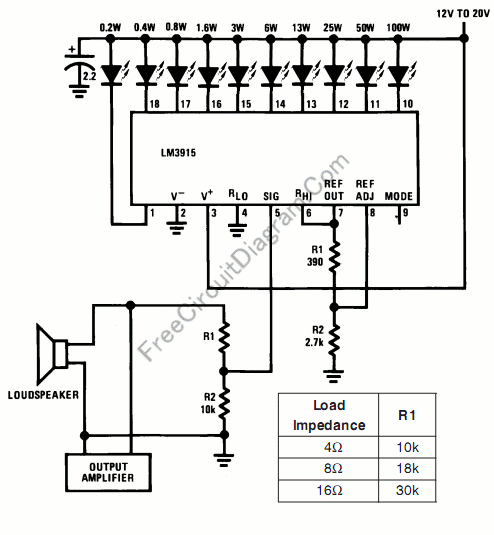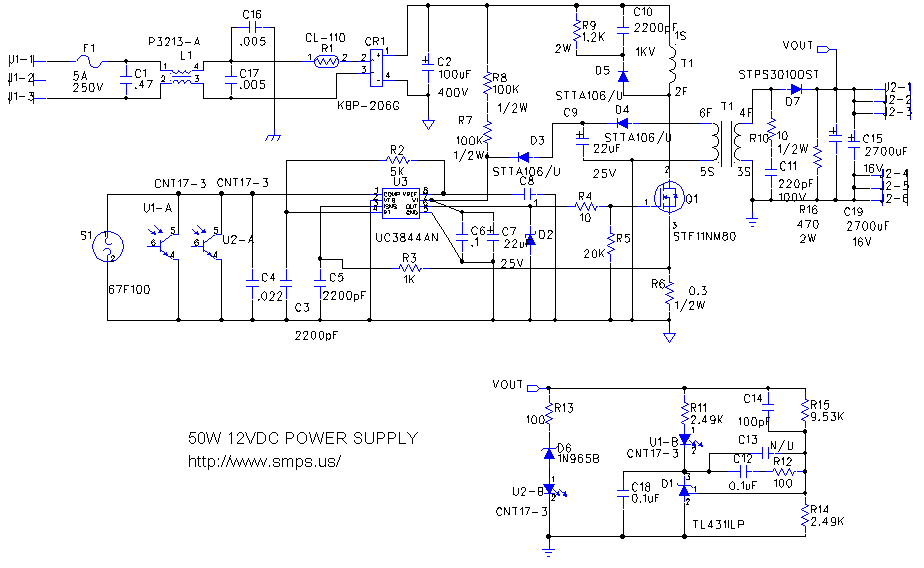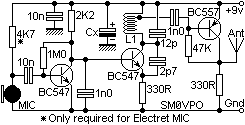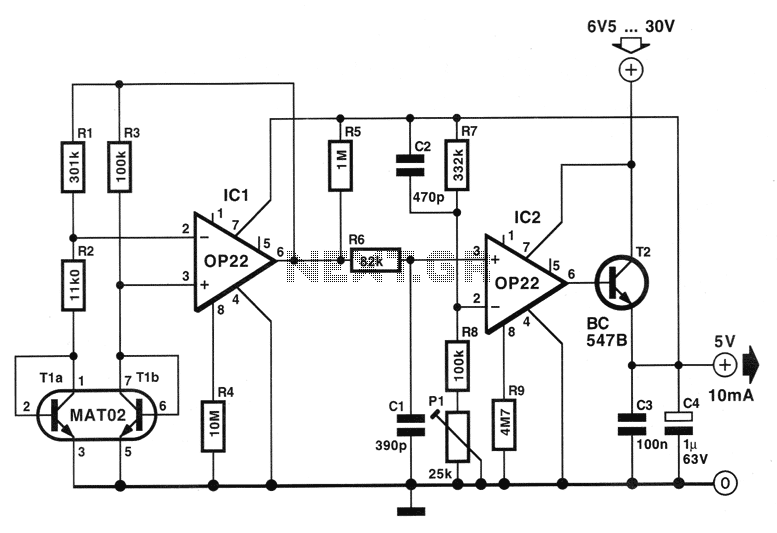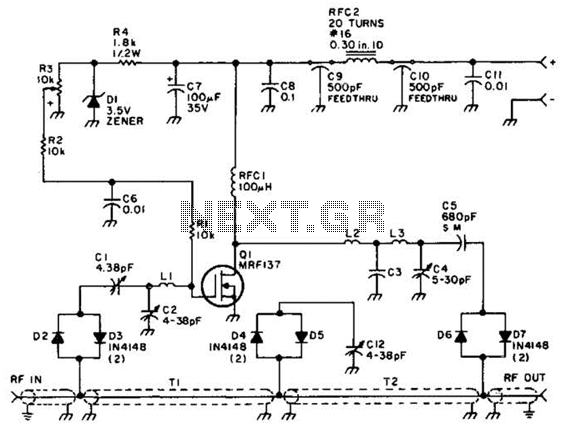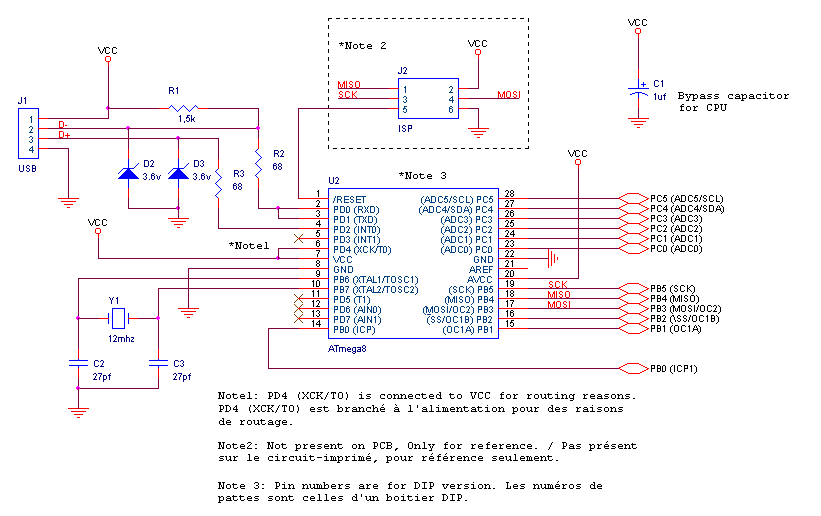
USB As A Power Source
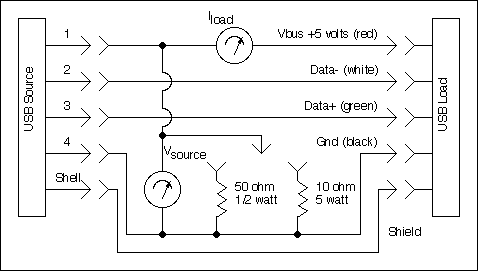
The Universal Serial Bus (USB) has become a popular method for connecting computer peripherals. The original USB 1.1 specification limited data rates to approximately 12 Mbits/sec, while the updated USB 2.0 specification increases these rates to up to 480 Mbit/sec. Both versions of USB can supply DC power to peripheral devices. USB is generally less expensive than FireWire because it does not require a dedicated FireWire controller chip set; instead, the computer's CPU handles the USB controller function through software. Under optimal conditions, USB can perform comparably to FireWire, but it may struggle at sustained high data rates. FireWire typically performs better but is more costly, making USB 2.0 more prevalent, especially in lower-end hardware. The USB 2.0 specification is available at a designated link, with the USB 1.1 specification also accessible at the bottom of the referenced page. In addition to data transmission, USB provides 5 ± 0.25 volts to power unpowered devices or charge batteries in self-powered devices. A USB controller or hub is required to power one unit load (100 mA, low power load) and can optionally power up to five unit loads (500 mA, high power load). The specification does not address intermediate loads, implying that devices fall into either low power (e.g., keyboards or mice) or high power (e.g., iPods or PDAs) categories. Each USB device requires a power source, which may come directly from the USB port, as in the case of a jump drive, or from an internal battery that requires charging. As the number of USB devices has increased, managing individual chargers for each device has become cumbersome. Since the USB power specification is standardized, any charger with adequate load capacity should theoretically charge any device. However, experiences have shown variability in compatibility, with certain devices, such as iPods, being more selective about their power sources. Ideally, a single high current charger could charge multiple USB devices, but determining which charger works universally can be trial and error. To facilitate this process, a simple load tester can be constructed using a USB extension cable and a digital meter to assess each USB power source's load handling capabilities at one and five unit loads, as well as to measure the current draw of each load. This data will assist in identifying suitable USB chargers for travel. USB chargers are available in two types: AC powered and DC powered. AC powered chargers typically operate from the US standard of 110 VAC but can also accommodate the worldwide range of 90-250 VAC at 50 to 60 Hz with the appropriate adapter. DC powered chargers, often in a cigarette lighter form factor, operate from +12 volts DC. It is important to consider that some regions, such as Tahiti, may use positive ground systems in vehicles, necessitating awareness when renting cars internationally. Additionally, a 12-volt standard is sometimes found on airlines, primarily in business or first class. While the availability of AC powered chargers is preferred, DC powered chargers are compact and serve as a useful backup.
The USB interface has evolved into an essential standard for connecting a wide array of devices, facilitating not only data transfer but also power delivery. The distinction between USB 1.1 and USB 2.0 is significant, as the latter offers a substantial increase in data throughput, making it suitable for devices that require higher bandwidth. Furthermore, the ability of USB to provide power simplifies the charging process for many devices, allowing for a unified charging solution through a single type of cable and connector.
When designing USB-powered circuits, it is critical to consider the power requirements of each device. Low power devices, such as mice and keyboards, can operate efficiently at 100 mA, while high power devices, such as smartphones and tablets, may require up to 500 mA. The USB specification allows for multiple device connections through a hub, which can distribute power effectively among connected devices.
The construction of a USB load tester using an extension cable and a digital meter enables precise measurement of power delivery capabilities. This tool can help in evaluating the performance of various USB chargers under different load conditions, ensuring compatibility and efficiency when charging multiple devices.
In terms of charger types, AC powered chargers are generally more robust and versatile, accommodating a wider range of input voltages, making them suitable for international use. DC powered chargers, while limited to specific voltage inputs, offer portability and convenience for use in vehicles or during travel.
Overall, understanding the specifications and capabilities of USB technology is essential for effective device management and charger selection. The implementation of a systematic approach to testing and evaluating USB power sources will enhance the user experience, ensuring that devices remain charged and operational in various environments.The Universal Serial Bus (USB) has become a popular method of connecting computer peripherals. The original USB 1. 1 specification limited data rates to about 12 Mbits/sec. The updated USB 2. 0 spec increases those rates to up to 480 Mbit/sec. Both versions of USB can provide DC power to peripheral devices. This power form is the subject of this pag e. USB is less expensive than FireWire because a dedicated FireWire controller chip set isn`t needed. The computer`s CPU does the USB controller function in software. Under good conditions, USB can work nearly as well as FireWire, but at sustained high data rates, USB will sag under the strain. FireWire tends to work better but cost more therefore USB 2. 0 is more common, especially in lower end hardware. The USB 2. 0 specification can be found at the link. For reference, a link to the USB 1. 1 specification can be found at the bottom of the referenced page. Besides a data link, USB provides 5 +/- 0. 25 volts to power an otherwise unpowered device or charge a battery in a self powered device. A USB controller or hub is required to power one unit load (100 mA, a low power load). It can optionally power up to 5 unit loads (500 mA, a high power load). The spec is silent about intermediate loads, so I assume that the sources deal with just the two cases.
Either a load is low power (like a keyboard or a mouse) or high power (like an iPod or PDA). Each USB device requires some way to power it. The device may run entirely from the USB port such as a jump drive does. Some devices have internal batteries that need charging. In any event, as the number of USB devices that I`ve collected has increased, management of an individual charger for each device is becoming a pain in the backside. Since the USB power form specification is a standard, ANY charger with sufficient load capability should be able to charge ANY device.
In my experience, this is sometimes true and sometimes not true. iPods in particular seem to be a little picky as to what device is powering them. In a perfect world I should be able to carry only a high current charger of some convenient form factor and charge any of my USB toys with it. The question is which which charger will work with ALL of the toys. To a first order, it is reasonable to just cut and try. I`ve been able to determine what loads are most sensitive and use them to test various sources. By doing that, I`ve mostly figured out what works with what. However, I am an engineer and as such, I want data so that I can see what is really going on. To get that data requires testing with some form of metrics available. I`ve elected to make a simple load tester out of an USB extension cable and a digital meter. I can test each USB power source for load handling at one and five unit loads and also measure the current draw of each USB load.
Powered with this data, I can then determine which USB chargers I want to carry with me on my travels and be confident that it`ll work with all of my USB devices. The chargers come in two flavors, AC powered and DC powered. The AC powered ones typically operate from the US standard of 110 VAC but some will also deal with the worldwide range of 90-250 VAC at 50 to 60 Hz provided that a proper "gender bender" adaptor is available to allow it to plug in to international power sockets.
The other type is typically in a cigarette lighter form factor and runs from +12 volts DC. There are still places where the cars are positive ground (Tahiti is one) so you must be somewhat aware with international rental cars. There is also a 12 volt standard used by some airlines, usually only in business or first class. I don`t get to see those as when I fly, I am usually in coach. I typically keep a 110 VAC inverter and a power strip in my truck so that I really only need the AC powered versions.
However, the DC ones are typically small and light and can work as a backup. I am also only concer 🔗 External reference
The USB interface has evolved into an essential standard for connecting a wide array of devices, facilitating not only data transfer but also power delivery. The distinction between USB 1.1 and USB 2.0 is significant, as the latter offers a substantial increase in data throughput, making it suitable for devices that require higher bandwidth. Furthermore, the ability of USB to provide power simplifies the charging process for many devices, allowing for a unified charging solution through a single type of cable and connector.
When designing USB-powered circuits, it is critical to consider the power requirements of each device. Low power devices, such as mice and keyboards, can operate efficiently at 100 mA, while high power devices, such as smartphones and tablets, may require up to 500 mA. The USB specification allows for multiple device connections through a hub, which can distribute power effectively among connected devices.
The construction of a USB load tester using an extension cable and a digital meter enables precise measurement of power delivery capabilities. This tool can help in evaluating the performance of various USB chargers under different load conditions, ensuring compatibility and efficiency when charging multiple devices.
In terms of charger types, AC powered chargers are generally more robust and versatile, accommodating a wider range of input voltages, making them suitable for international use. DC powered chargers, while limited to specific voltage inputs, offer portability and convenience for use in vehicles or during travel.
Overall, understanding the specifications and capabilities of USB technology is essential for effective device management and charger selection. The implementation of a systematic approach to testing and evaluating USB power sources will enhance the user experience, ensuring that devices remain charged and operational in various environments.The Universal Serial Bus (USB) has become a popular method of connecting computer peripherals. The original USB 1. 1 specification limited data rates to about 12 Mbits/sec. The updated USB 2. 0 spec increases those rates to up to 480 Mbit/sec. Both versions of USB can provide DC power to peripheral devices. This power form is the subject of this pag e. USB is less expensive than FireWire because a dedicated FireWire controller chip set isn`t needed. The computer`s CPU does the USB controller function in software. Under good conditions, USB can work nearly as well as FireWire, but at sustained high data rates, USB will sag under the strain. FireWire tends to work better but cost more therefore USB 2. 0 is more common, especially in lower end hardware. The USB 2. 0 specification can be found at the link. For reference, a link to the USB 1. 1 specification can be found at the bottom of the referenced page. Besides a data link, USB provides 5 +/- 0. 25 volts to power an otherwise unpowered device or charge a battery in a self powered device. A USB controller or hub is required to power one unit load (100 mA, a low power load). It can optionally power up to 5 unit loads (500 mA, a high power load). The spec is silent about intermediate loads, so I assume that the sources deal with just the two cases.
Either a load is low power (like a keyboard or a mouse) or high power (like an iPod or PDA). Each USB device requires some way to power it. The device may run entirely from the USB port such as a jump drive does. Some devices have internal batteries that need charging. In any event, as the number of USB devices that I`ve collected has increased, management of an individual charger for each device is becoming a pain in the backside. Since the USB power form specification is a standard, ANY charger with sufficient load capability should be able to charge ANY device.
In my experience, this is sometimes true and sometimes not true. iPods in particular seem to be a little picky as to what device is powering them. In a perfect world I should be able to carry only a high current charger of some convenient form factor and charge any of my USB toys with it. The question is which which charger will work with ALL of the toys. To a first order, it is reasonable to just cut and try. I`ve been able to determine what loads are most sensitive and use them to test various sources. By doing that, I`ve mostly figured out what works with what. However, I am an engineer and as such, I want data so that I can see what is really going on. To get that data requires testing with some form of metrics available. I`ve elected to make a simple load tester out of an USB extension cable and a digital meter. I can test each USB power source for load handling at one and five unit loads and also measure the current draw of each USB load.
Powered with this data, I can then determine which USB chargers I want to carry with me on my travels and be confident that it`ll work with all of my USB devices. The chargers come in two flavors, AC powered and DC powered. The AC powered ones typically operate from the US standard of 110 VAC but some will also deal with the worldwide range of 90-250 VAC at 50 to 60 Hz provided that a proper "gender bender" adaptor is available to allow it to plug in to international power sockets.
The other type is typically in a cigarette lighter form factor and runs from +12 volts DC. There are still places where the cars are positive ground (Tahiti is one) so you must be somewhat aware with international rental cars. There is also a 12 volt standard used by some airlines, usually only in business or first class. I don`t get to see those as when I fly, I am usually in coach. I typically keep a 110 VAC inverter and a power strip in my truck so that I really only need the AC powered versions.
However, the DC ones are typically small and light and can work as a backup. I am also only concer 🔗 External reference
